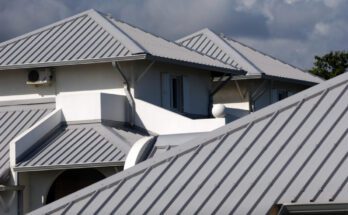Four astronauts blasted off to the International Space Station from Cape Canaveral early Friday, marking NASA’s first-ever launch with a slightly-used SpaceX rocket and capsule. After a one-day weather delay, the SpaceX Falcon 9 rocket and the Endeavour Crew Dragon module lifted off at 5:49 am as planned.
“Endeavour launches once again four astronauts from three countries to the one and only International Space Station,” said a voice from NASA Mission Control.
After a two-minute and 40 second burn, the first stage rocket detached from the second stage, ignited its thrusters and slowly returned to Earth to land on a floating platform off the coast of Florida. Meanwhile, the Crew-2 astronauts continued for another six minutes powered by the second stage booster, which put the Dragon Crew capsule into Earth orbit.
During the pre-dawn liftoff, the rocket’s Merlin engines provided 1.7 million pounds of thrust to leave Earth, reaching a speed of 17,000 miles per hour as it reached orbit. The successful launch was greeted by cheers from technicians NASA’s Mission Control room in Houston and SpaceX headquarters in Hawthorne, California.
After 13 minutes, the crew was able to lift their helmet visors and watch the sunrise over the Atlantic Ocean.
After a few laps around the Earth, Crew-2 will dock with the station early Saturday, joining the seven astronauts already on board. The ISS will be at full capacity for several days until Crew-1, who arrived in November, returns to Earth on April 28. Crew-2 commander Shane Kimbrough, pilot Megan McArthur of NASA, mission specialist Thomas Pesquet of the European Space Agency, and mission specialist Akihiko Hoshide of the Japan Aerospace Exploration Agency (JAXA) will spend the next six months on the space station conducting experiments on human tissue engineering, as well as installing new flexible solar panels that will boost the station’s power by 30 percent.
This is the first time that NASA has sent humans into space via a previously-used rocket and capsule. The rocket boosted the Crew-1 flight in November 2020, while the Endeavour Crew Dragon capsule flew during the Demo-2 mission in May 2020. Reusability is key to SpaceX’s strategy of keeping costs down while maintaining a rapid pace of launches for both NASA and its commercial clients, according to Benji Reed, SpaceX’s senior director for human spaceflight. “The Holy Grail of spaceflight is reusability,” Reed told reporters during a teleconference earlier this week. “We’re continuing our work together as a team to assess how many more flights we’d be able to reuse.”
The Falcon 9 rocket has been designed for about ten flights, but has to be recertified by NASA before each mission. The Space Shuttle was also a reusable spacecraft, but it landed on a runway like an airplane and was boosted into space by rockets that were later discarded. (NASA ended the shuttle program in 2011.) The Space Shuttle required a tremendous amount of maintenance between flights, including the inspection and replacement by hand of hundreds of tiled heat shields on its underbelly. The new SpaceX rocket and capsule combo requires fewer repairs in between flights. That includes replacement of some wiring and checking whether saltwater is getting into the capsule after the crew splashes down into the ocean when they return to Earth, Reed said.
But that wasn’t the initial plan, says Garrett Reisman, a former NASA astronaut who managed commercial crew contracts at SpaceX from 2015 to 2018. “When I wrote that original contract, we wrote in there that every time we launched NASA astronauts, you have a brand spanking new rocket, and a brand spanking new spacecraft,” he says. That model changed because the Falcon 9 and the Crew Dragon capsule have performed well over the past few years. “The thing that’s surprising is not that we’re doing it [reusing rockets], it is that we are doing it as quickly as we’re doing it,” says Reisman, who is now a professor of astronautical engineering at the University of Southern California and a technical consultant for the AppleTV alternate space history series For All Mankind.


